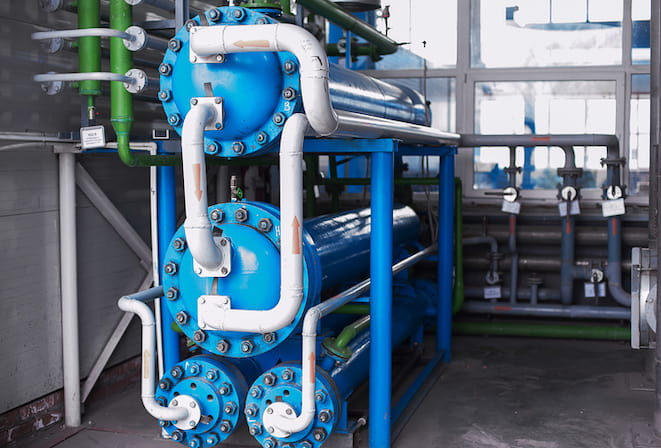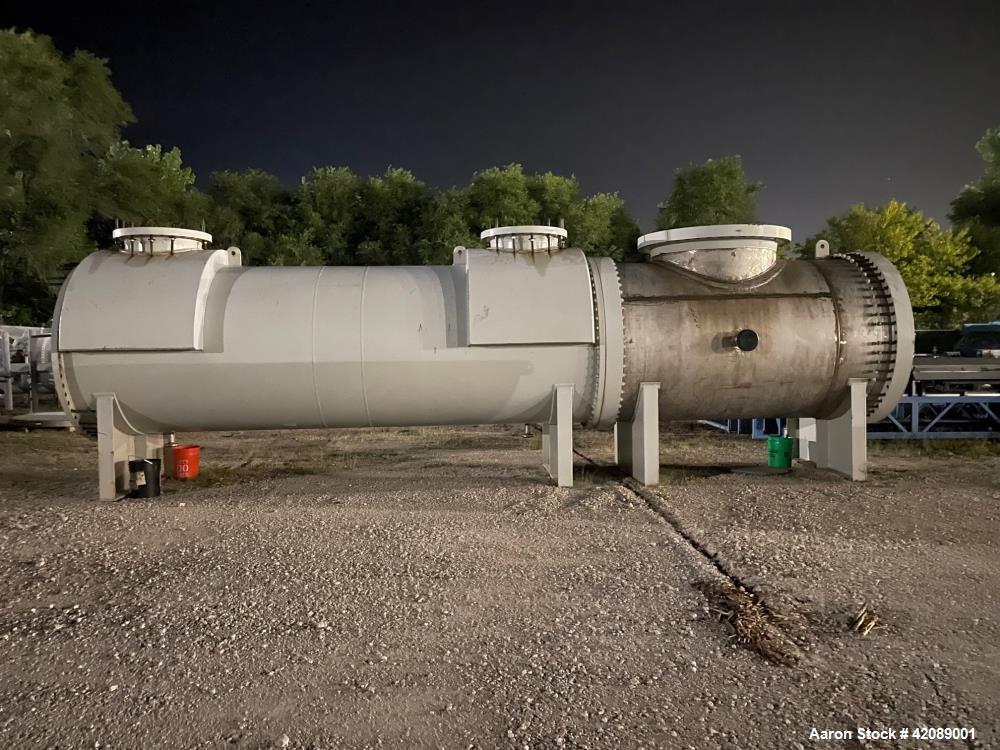DVS Heat Transfer Systems: A Definitive Guide to Smarter IoT Integration
The Function of Heat Transfer Systems in Sustainable Energy Solutions for the Future
Heat transfer systems are crucial in the pursuit for lasting energy services. They enhance thermal power monitoring, improving the effectiveness of sustainable innovations. By utilizing mechanisms like conduction, convection, and radiation, these systems reduce power losses. Their function in solar thermal and geothermal applications is specifically considerable. As innovations arise, the capacity for further innovations increases crucial concerns concerning future power methods. What developments will shape the landscape of lasting power?
Recognizing Heat Transfer Equipments

The Importance of Thermal Energy Administration
Efficient thermal energy management is essential for optimizing power effectiveness and decreasing waste in various systems. By controling temperature and optimizing Heat transfer processes, companies can substantially minimize energy intake and operational prices. Reliable management includes the application of sophisticated innovations and techniques that keep track of and regulate thermal conditions within systems, ensuring that energy sources are used effectively. Furthermore, proper thermal energy administration contributes to minimizing greenhouse gas exhausts, straightening with international sustainability objectives. It also enhances system reliability and performance, causing boosted item top quality and longer equipment lifespan. Ultimately, prioritizing thermal power administration is a vital step in the direction of developing much more sustainable energy options and cultivating a liable technique to power intake in property and commercial contexts.
Applications of Heat Transfer in Renewable Power
While numerous renewable power sources guarantee sustainability, the efficient application of Heat transfer plays a necessary role in their performance. In wind power systems, Heat transfer is utilized for turbine element cooling, enhancing performance and longevity. Geothermal energy depends on reliable Heat exchange between the planet's subsurface and the fluid circulating in the system, maximizing energy removal. Biomass energy procedures likewise take advantage of Heat transfer, as it helps in transforming organic materials right into usable fuel via pyrolysis and gasification. Furthermore, in hydropower, keeping optimal temperatures in tanks can enhance power outcome. Each of these applications demonstrates the critical value of Heat transfer systems in improving renewable resource innovations, inevitably adding to a much more sustainable power future.
Enhancing Solar Thermal Power Effectiveness
As solar thermal power systems proceed to develop, boosting their performance has actually come to be crucial for optimizing energy result. Advancements in Heat transfer innovations, such as improved thermal storage space products and cutting-edge Heat exchangers, play a substantial function in enhancing performance. By making use of advanced materials that have remarkable thermal conductivity, systems can move and catch Heat better. Additionally, incorporating tracking systems that follow the sunlight's path assurances that collection agencies obtain optimal solar exposure throughout the day. Making use of nanotechnology in solar absorbers can better raise power absorption prices. In addition, including computerized control systems helps regulate temperature levels and take care of power circulation effectively, resulting in minimized losses and improved overall system performance. These improvements lead the way for even more lasting solar thermal power remedies in the future.
Geothermal Home Heating: A Sustainable Solution
Geothermal heating provides a feasible choice for lasting power, offering significant ecological advantages via decreased greenhouse gas emissions. Its effectiveness and cost-effectiveness make it an appealing option to standard heating unit. However, challenges associated with application has to be dealt with to maximize its possible impact.
Environmental Benefits of Geothermal
Although traditional home heating techniques add considerably to greenhouse gas exhausts, geothermal heating presents a compelling choice that lessens environmental impact. By harnessing the Planet's interior Heat, geothermal systems make use of an eco-friendly energy resource, significantly reducing dependence on fossil gas. This technique generates minimal carbon discharges, making it a cleaner alternative for property and commercial heating. In addition, geothermal systems advertise energy efficiency, as they call for less energy contrasted to standard furnace. DVS Heat Transfer Systems. The application of geothermal energy additionally helps in reducing air pollution, boosting local air top quality and public wellness. As a lasting service, geothermal heating supports climate adjustment mitigation efforts, placing itself as a necessary component in the change in the direction of a greener future
Performance and Cost-Effectiveness
How does geothermal home heating gauge up in regards to performance and cost-effectiveness compared to typical furnace? Geothermal home heating demonstrates remarkable performance, frequently achieving a coefficient of efficiency (POLICE) of 3 to 5, meaning it generates 3 to five systems of Heat for each unit of electricity eaten. This efficiency converts into reduced operating expenses, especially in regions with secure geothermal resources. Initial installment costs can be greater than traditional systems; nevertheless, lasting cost savings on energy costs and lowered maintenance costs can offset these in advance investments. Additionally, several federal governments incentivize geothermal systems via rebates and tax obligation credit reports, improving their cost-effectiveness. Generally, geothermal heating becomes a this post sustainable and financially viable choice to even more standard heating solutions.
Implementation Difficulties and Solutions
Countless obstacles can hamper the extensive application of geothermal home heating systems, despite their clear advantages as a sustainable energy service. High preliminary setup expenses usually discourage home owners and capitalists, making financing a substantial obstacle. Additionally, the geographical constraints of ideal geothermal sites restrict availability in particular regions. Regional laws and permitting procedures can also complicate task development, causing hold-ups. Discover More Here Additionally, public awareness and understanding of geothermal systems continue to be low, preventing acceptance. To address these difficulties, targeted education campaigns can boost public expertise, while federal government motivations can relieve financial worries. Collaborating with regional authorities to simplify regulations might promote smoother project approvals, eventually promoting the fostering of geothermal heating as a practical, lasting power alternative.
Innovations in Heat Transfer Technologies
Advancements in Heat transfer modern technologies play a vital role in improving energy effectiveness and sustainability. Advanced Heat exchangers and stage change products are at the forefront of these advancements, supplying substantial renovations in thermal management. These innovations not only maximize energy usage yet likewise add to minimizing environmental impact in numerous applications.
Advanced Heat Exchangers
Advanced Heat exchangers play a necessary duty in improving energy performance throughout different applications in sustainable energy options. These gadgets assist in the transfer of Heat in between two or even more liquids, markedly minimizing energy consumption in procedures such as industrial heating, air conditioning, and power generation. Advancements in products and layout, such as making use of nanofluids and small arrangements, have resulted in improved thermal performance and reduced size requirements. Furthermore, advancements in digital tracking and control systems enable enhanced procedure, additional raising performance. By minimizing waste Heat and maximizing energy recovery, progressed Heat exchangers contribute to decrease carbon impacts and sustain the shift towards eco-friendly innovations. Their proceeded advancement is crucial for attaining global energy sustainability objectives.
Stage Modification Products
The combination of phase adjustment materials (PCMs) right into Heat transfer innovations stands for a considerable advancement in power administration and performance. PCMs soak up and release thermal energy during their stage changes, allowing effective temperature level law in structure products and energy systems. By saving excess Heat throughout optimal periods and launching it when need boosts, PCMs add to pack shifting and power preservation - DVS Heat Transfer Systems. This ability boosts the performance of sustainable energy systems, specifically in solar thermal applications. Additionally, PCMs can improve the thermal convenience of interior atmospheres, reducing reliance on traditional heating and cooling approaches. As developments in PCM formulations remain to emerge, their role in sustainable energy solutions link is poised to grow, using encouraging opportunities for future research study and application

Future Prospects for Heat Transfer in Lasting Power
As the need for lasting power options continues to increase, the role of Heat transfer systems is becoming increasingly vital in shaping future technologies. Innovations in products and layouts are anticipated to improve efficiency in Heat transfer, decreasing power losses in different applications. The combination of innovative thermal storage space systems, such as phase adjustment materials and thermochemical storage, will make it possible for better management of power sources. Research into nanofluids and biomimetic Heat exchangers may better optimize thermal efficiency. Moreover, the fostering of smart modern technologies will permit real-time surveillance and flexible control of Heat transfer processes. These innovations are poised to greatly add to the total performance and sustainability of power systems, leading the way for a much more energy-efficient future.
Often Asked Inquiries
Just How Can People Apply Heat Transfer Equipment at Home?

People can apply Heat transfer systems in your home by installing energy-efficient appliances, making use of glowing heating, and maximizing insulation. These actions enhance power performance, minimize prices, and promote sustainable practices in household environments.

What Are the Prices Connected With Installing Heat Transfer Equipments?
The prices linked with setting up Heat transfer systems differ widely, generally encompassing equipment, setup labor, and maintenance. Variables such as system type, home dimension, and local policies significantly affect the total expenditure included.
Exist Government Rewards for Heat Transfer System Installations?
Federal government motivations for Heat transfer system setups differ by area and can include tax credit scores, refunds, and gives. These economic advantages intend to urge fostering, eventually promoting energy performance and minimizing environmental impact within communities.
How Do Heat Transfer Equipments Impact Power Expenses?
Heat transfer systems significantly influence energy bills by optimizing energy effectiveness. By boosting the transfer of Heat, these systems lower power consumption, resulting in reduced energy costs and creating an extra lasting technique to power management.
What Upkeep Is Required for Heat Transfer Equipments?
Upkeep for Heat transfer systems consists of normal assessments, cleansing of elements, checking liquid degrees, ensuring correct insulation, and changing used parts. These tasks aid keep efficiency, prevent malfunctions, and extend the system's functional life expectancy.
These systems help with the motion of thermal energy from one medium to an additional, making it possible for the transfer of Heat for home heating, power, or cooling generation objectives. Geothermal energy relies on reliable Heat exchange between the earth's subsurface and the fluid flowing in the system, maximizing energy extraction. In addition, geothermal systems promote energy effectiveness, as they call for less energy compared to conventional home heating systems. Advanced Heat exchangers play a vital function in boosting energy efficiency throughout numerous applications in lasting power remedies. Heat transfer systems significantly affect power expenses by maximizing power effectiveness.